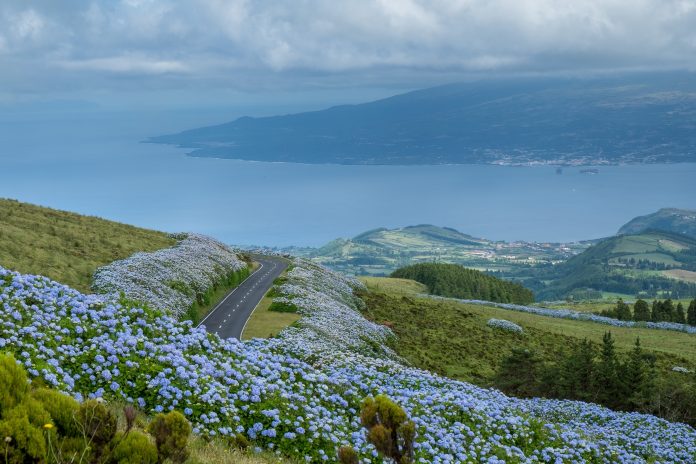Faial is known as the Blue Island of the Azores due to the variety of hydrangeas in different shades of blue that span the island. Faial is actually the most westernmost point in Europe, located 4.5 miles from Pico and 11 miles from Sao Jorge.
Faial is most widely known for its marina, a meeting point for sailors navigating the Atlantic ocean. It also boasts several churches in traditional Azorean style and jaw-dropping landscapes for nature lovers. Let’s take a look at the 6 best things to do in Faial, Azores for your next Azorean getaway!
1. Hike the beautiful volcanic crater of Caldeira
Covered by bushes and laurel forest, the Caldeira in Faial offers one of the best views of the Azores. This volcanic crater is 400 meters deep, and you can actually walk to the mouth of the Caldeira.
However, do not do this alone! We recommend booking this hike with a professional to do so that you do not get lost off the trail. You can also walk around the crater, which will take around 2 hours. In fact, Faial has a lot of beautiful trails to hike, such as this 10 Volcano trail that you can book here.
After visiting the Caldeira, we recommend heading south of it to Cabeco Gordo, the highest point on the island, standing at 1043 meters. Be careful on rainy days, as the terrain can be quite slippery.
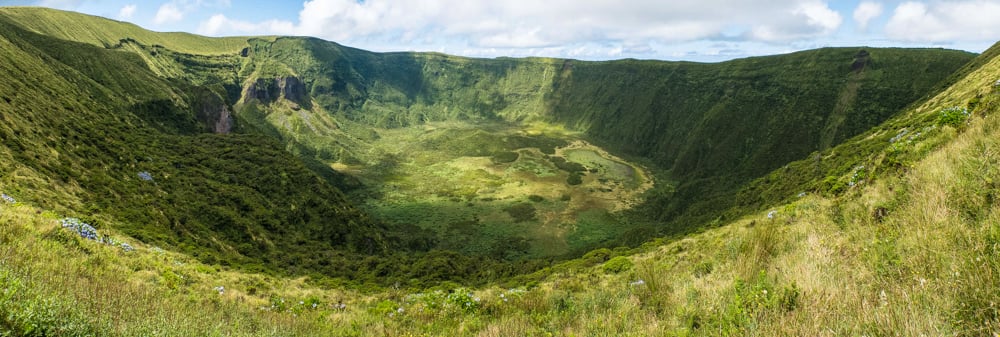
2. Take a swim in some of the best Azorean beaches
Faial has some of the best beaches in the Azores, allowing you to take a much-needed swim after a tiring hike. The most popular beach is called Praia (Beach). This is a sandy beach that is dark in color due to the volcanic nature of the island. The beach also has changing rooms and showers!
Other beautiful black sandy beaches are the Praia do Norte and Porto Pim, which provide a gorgeous view of Mount Pico. Porto Pim is perhaps the only white sandy beaches in the Azores. It is sheltered from the wind and currents, making it a calm place to swim.
Praia do Norte is a wide stretch of black sandy beach that is also sheltered from the south by dramatic cliffs. This beach is a famous surf spot due to the large waves, so beware of the sea.
3. Explore the city center of Faial, Horta
Horta is the city center of Faial and the perfect place for some exploring, with quaint churches everywhere. But the start of Horta is the marina, one that is known all over the world. This marina is a primary stop for boats and yachts crossing the Atlantic Ocean.
It has a large mural where sailors from around the world paint a section to symbolize their voyage. These include paintings noting the names of their vessels, crew, and dates so that their voyage is remembered.
Near the marina, you must visit Peter Cafe Sport, an emblematic cafe on the island that thousands have passed through. This place is known as the meeting point for sailors who are sailing the Atlantic Ocean. This place also houses the island’s scrimshaw museum, certificates carved from whale teeth and bones.
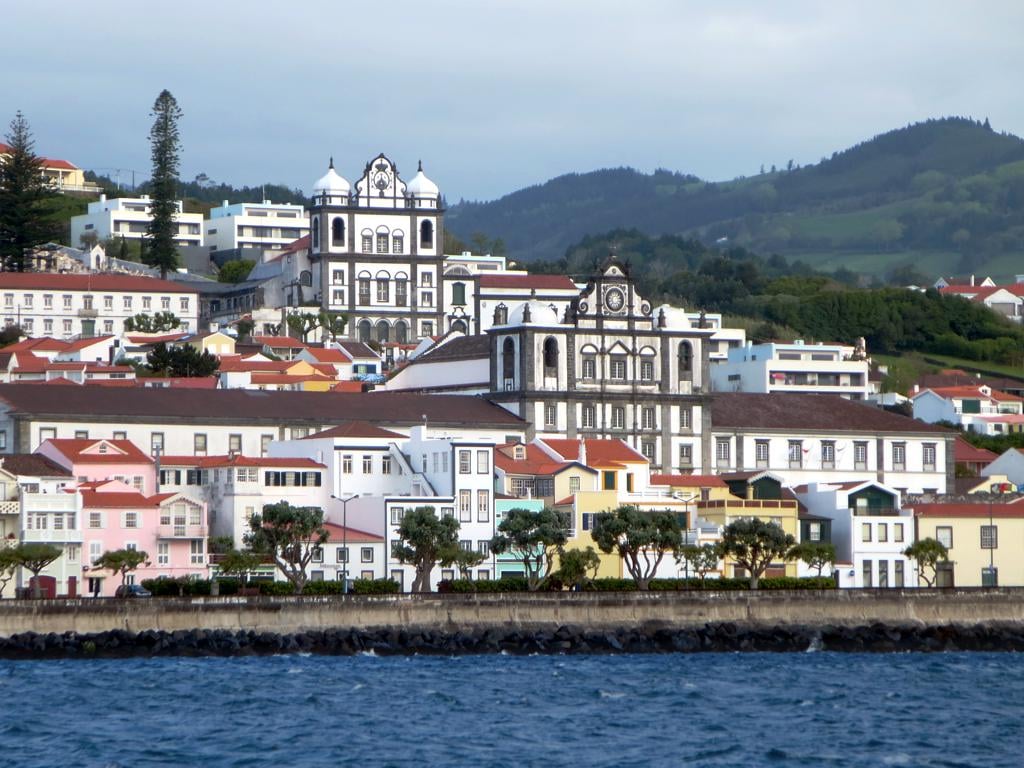
4. Visit the site of a volcanic eruption at Capelinhos
The Capelinhos is the site of a volcanic eruption that occurred on September 27, 1957. While no one was killed, the eruption that lasted for 13 months caused massive destruction on the island. This period spawned 300 seismic events, destroying 300 houses. Over 2,000 people were evacuated to the US and Canada.
This was the most recent volcanic eruption in all of the Azores. Today, you can visit the Capelinhos lighthouse and Visitors Center at the volcanic site in Faial. The volcano and the floor are the color of black volcanic rock, making this an interesting and beautiful site.
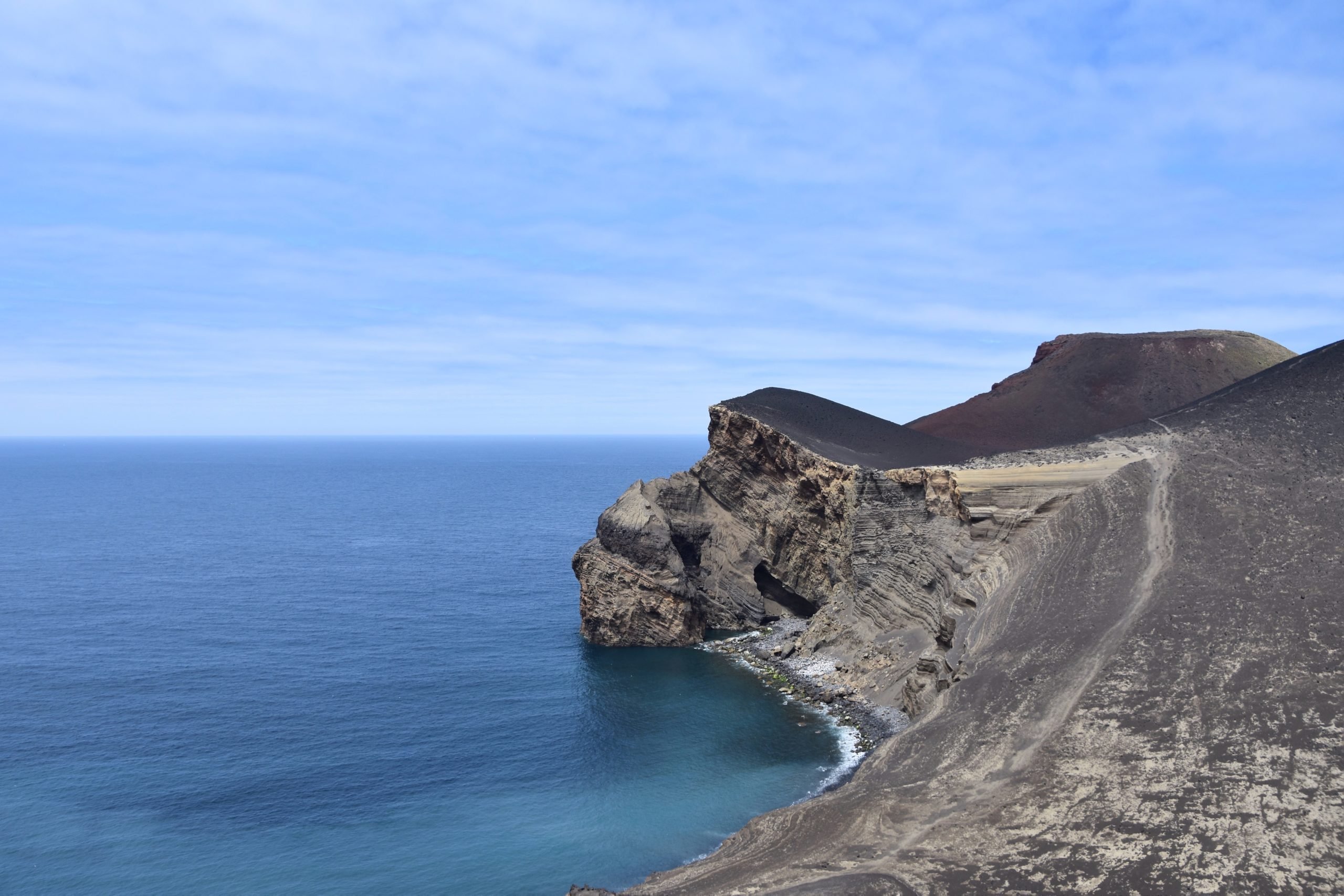
5. Spot some whales in a unique experience
Faial is known for being a great place in the Azores to spot some whales and dolphins. There are plenty of sea life experiences that allow you to see these magnificent creatures while still respecting marine life and being environmentally aware.
The best season to spot some whales and dolphins is between April and October, but even then, you can never be 100% certain you will see a whale. If you’re lucky, you’ll get to see a sperm whale around 20 meters long.
For a full experience, book this tour, where you’ll get to spot some whales and dolphins, as well as learn about the whaling history of the island and visit the whaler’s museum. This tour also takes you to Capelinhos!
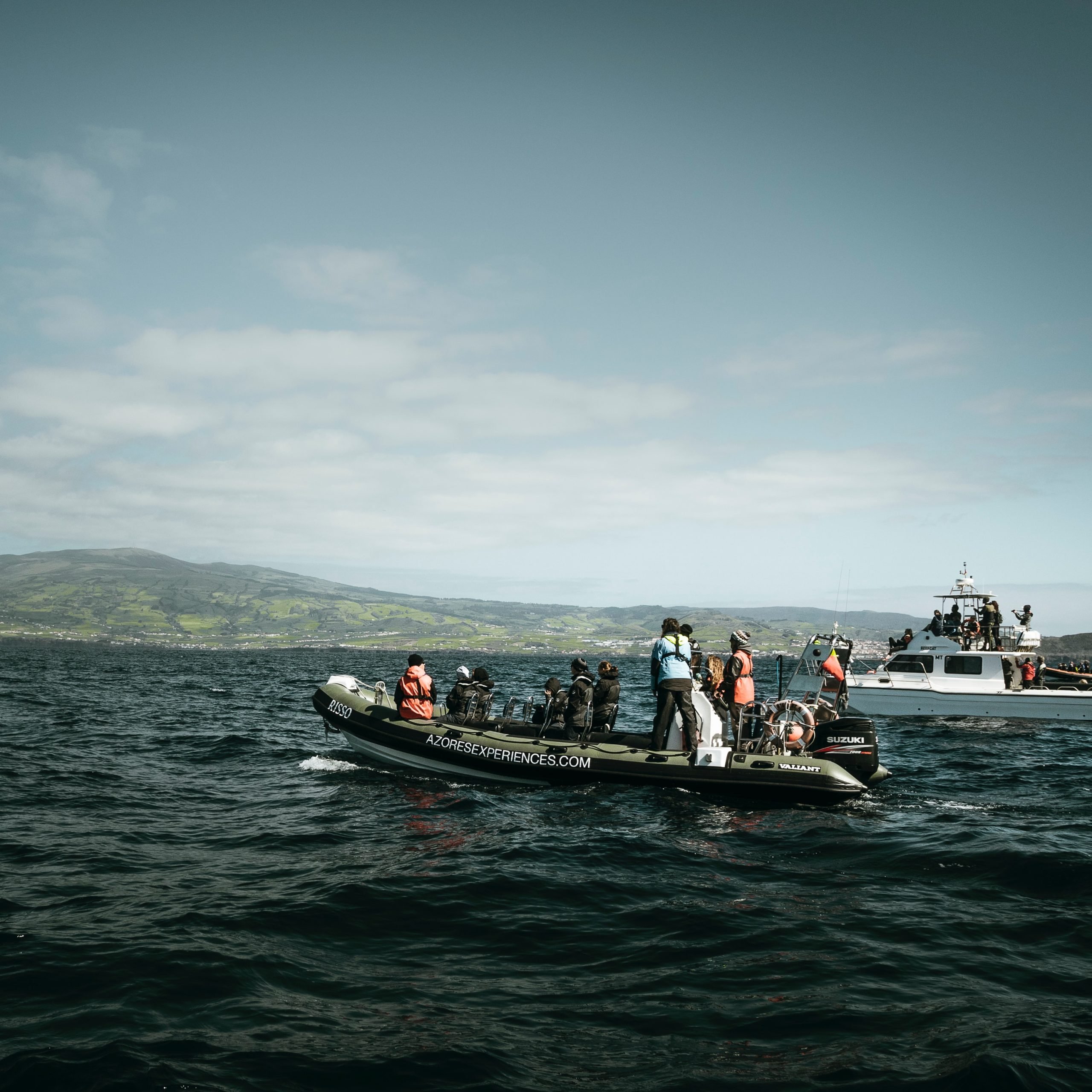
Book Whale & Dolphin Experiences in Faial
6. Take the ferry to Pico for the day
Pico is only 4.5 miles away, a distance you must take advantage of when staying in Fala. The ferry from Faial (Horta) to Pico (Madalena) only takes 30 minutes and makes for an enjoyable ride.
The second-largest island in the Azores, Pico is home to Portugal’s highest mountain, Pico mount at over 2,000 meters high. At 300,000 years old, Pico is the most recently formed island of the Azores. The Hawaii of Portugal Pico island is 46 kilometers long and is filled with exotic vegetation and astonishing sea views.
There is so much to do on this island, so if you have the time, we recommend spending a few nights instead of just a day trip. One of our favorite things to do in Pico is looking for the seawater natural pools. Our favorites are Poço da Maré do Verdugo, Ponta do Admoiro, as well as the classic Lajes do Pico Natural and São Roque do Pico pools.
Pico might be even more famous for whale watching than Faial, so we recommend booking a dolphin and whale-guided tour with a biologist here. After, head to the whaler’s museum, where you get to learn about the former whaling industry.
While this island is most famously known for the difficult Pico hike, there are plenty of other hiking trails. The best hiking trails in Pico are Caminho das Lagoas (22 KM, 7 hours), Calheta do Nesquim (8.6 KM, 2h30), and Prainha do Norte (7.8 KM, 2h30).
Pico, The Black Island of Azores

